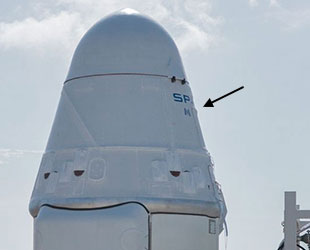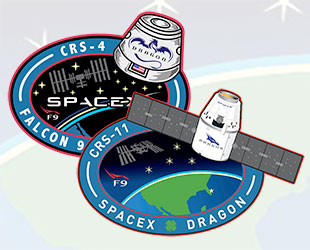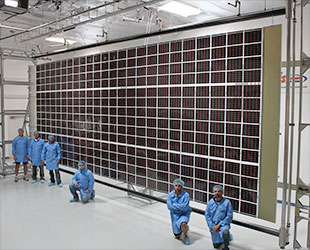June 3, 2017 — A neutron star observatory, a new type of roll-out solar array, 40 mice and thousands of fruit flies are now on their way to the International Space Station, having lifted off aboard SpaceX's first Dragon cargo spacecraft to fly for a second time.
The start of the CRS-11 uncrewed station resupply mission on Saturday (June 3) marked the 100th launch from Pad 39A at NASA's Kennedy Space Center in Florida in almost 50 years. The historic complex was the departure point for Apollo 11, the first flight to land humans on the moon, and the launch pad for the first and last space shuttle missions.
For SpaceX, the liftoff of its Dragon-topped Falcon 9 rocket at 5:07 p.m. EDT (2107 GMT) signaled the beginning of its 11th commercial resupply services (CRS) mission under a contract with NASA. After boosting the cargo capsule and the rocket's second stage to space, the Falcon's first stage successfully returned to an upright touchdown at SpaceX's Landing Zone-1 at Cape Canaveral Air Force Station.

The CRS-11 Dragon was stamped with an icon of the space station near a hatch to signify its previous CRS-4 mission. (SpaceX) |
The landing was SpaceX's fifth time recovering a Falcon 9 first stage at LZ-1 for potential reuse and the 11th landing overall (including landing on an ocean-based platform).
The launch also marked the first flight of a "used" Dragon spacecraft. The refurbished capsule was previously sent to resupply the space station on the SpaceX CRS-4 mission in September 2014.
"Supporting the Dragon re-flight is a really, really important step," said space station program manager Kirk Shireman. "SpaceX did a very thorough job in terms of certification of the Dragon and refurbing it, and NASA did a very thorough job of understanding that certification and making sure that it was safe to fly."
Most of the components of the Dragon were retained for its second flight, including its pressure vessel, but some parts needed to be replaced.

The SpaceX CRS-11 mission patch (lower right) borrows the layout of the CRS-4 patch, nodding to the Dragon's reuse. (SpaceX/cS) |
"The majority of this Dragon has been to the space station and been docked [there] for a couple of weeks," said Hans Koenigsmann, SpaceX's VP for mission assurance. "Some of the parts on the outside, the batteries for example, that saw sea water [were replaced]."
"The heat shield is a new one," he added.
The Dragon is now the fourth orbital-class spacecraft to be reused. In addition to the NASA space shuttle orbiters and the U.S. Air Force X-37B orbital test vehicles, a Soviet VA spacecraft and a NASA Gemini capsule were flown twice.
Loaded with 5,970 pounds (2,710 kilograms) of research, crew supplies and hardware, the Dragon is set to arrive at the station on Monday (June 5), where the Expedition 52 astronauts will use the 57.7-foot (17.6-meter) Canadarm2 robotic arm to reach out, capture and berth the spacecraft to the Earth-facing side of the orbital laboratory's Harmony module.
Among the CRS-11 investigations are Seedling Growth-3, a joint project of NASA and the European Space Agency (ESA) to study the basic mechanisms of light and gravity-sensing in plants; Advanced Combustion via Microgravity Experiments, a set of five independent studies of gaseous flames to improve fuel efficiency and reduce pollutants in practical combustion on Earth; and the Rodent Research-5 mission, seeing the fifth flight of 40 mice to study bone loss under microgravity conditions.

Roll Out Solar Array (ROSA) undergoes testing. (DSS via NASA) |
Also aboard the Dragon are thousands of fruit flies for the second study of the insects to understand how prolonged spaceflight affects the function of the flies' hearts.
The spacecraft's unpressurized trunk is also carrying a trio of instruments to be added to the space station's exterior, including MUSES (Multi-User System for Earth Sensing) to provide a precision-pointing for Earth observations and the Neutron Star Interior Composition Explorer (NICER), which will observe the collapsed cores of large stars.
Also flying in the trunk is the Roll Out Solar Array (ROSA), a demonstrator that will be deployed like a tape measure (or fruit roll-up) while mounted to the station's robotic arm for series of engineering tests. After the trial, the 15-foot (5 m) long array will be furled and re-stowed in the Dragon's trunk to burn up in the Earth's atmosphere.
The Dragon, once emptied of its cargo, will be loaded with science results, spent hardware and refuse for its return to an ocean splashdown off of California about a month after arriving at the space station.
